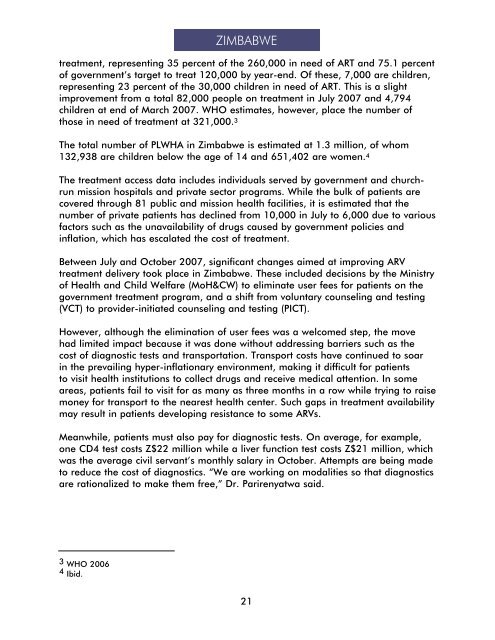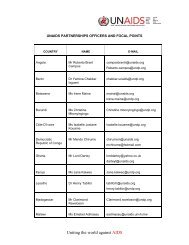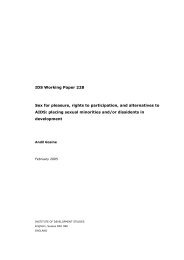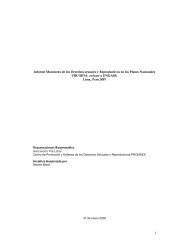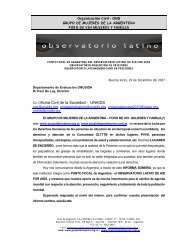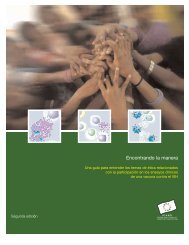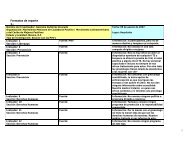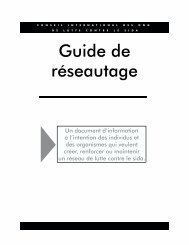Missing the Target #5: Improving AIDS Drug Access ... - CD8 T cells
Missing the Target #5: Improving AIDS Drug Access ... - CD8 T cells
Missing the Target #5: Improving AIDS Drug Access ... - CD8 T cells
You also want an ePaper? Increase the reach of your titles
YUMPU automatically turns print PDFs into web optimized ePapers that Google loves.
ZIMBABWEtreatment, representing 35 percent of <strong>the</strong> 260,000 in need of ART and 75.1 percentof government’s target to treat 120,000 by year-end. Of <strong>the</strong>se, 7,000 are children,representing 23 percent of <strong>the</strong> 30,000 children in need of ART. This is a slightimprovement from a total 82,000 people on treatment in July 2007 and 4,794children at end of March 2007. WHO estimates, however, place <strong>the</strong> number ofthose in need of treatment at 321,000. 3The total number of PLWHA in Zimbabwe is estimated at 1.3 million, of whom132,938 are children below <strong>the</strong> age of 14 and 651,402 are women. 4The treatment access data includes individuals served by government and churchrunmission hospitals and private sector programs. While <strong>the</strong> bulk of patients arecovered through 81 public and mission health facilities, it is estimated that <strong>the</strong>number of private patients has declined from 10,000 in July to 6,000 due to variousfactors such as <strong>the</strong> unavailability of drugs caused by government policies andinflation, which has escalated <strong>the</strong> cost of treatment.Between July and October 2007, significant changes aimed at improving ARVtreatment delivery took place in Zimbabwe. These included decisions by <strong>the</strong> Ministryof Health and Child Welfare (MoH&CW) to eliminate user fees for patients on <strong>the</strong>government treatment program, and a shift from voluntary counseling and testing(VCT) to provider-initiated counseling and testing (PICT).However, although <strong>the</strong> elimination of user fees was a welcomed step, <strong>the</strong> movehad limited impact because it was done without addressing barriers such as <strong>the</strong>cost of diagnostic tests and transportation. Transport costs have continued to soarin <strong>the</strong> prevailing hyper-inflationary environment, making it difficult for patientsto visit health institutions to collect drugs and receive medical attention. In someareas, patients fail to visit for as many as three months in a row while trying to raisemoney for transport to <strong>the</strong> nearest health center. Such gaps in treatment availabilitymay result in patients developing resistance to some ARVs.Meanwhile, patients must also pay for diagnostic tests. On average, for example,one CD4 test costs Z$22 million while a liver function test costs Z$21 million, whichwas <strong>the</strong> average civil servant’s monthly salary in October. Attempts are being madeto reduce <strong>the</strong> cost of diagnostics. “We are working on modalities so that diagnosticsare rationalized to make <strong>the</strong>m free,” Dr. Parirenyatwa said.3 WHO 20064 Ibid.21


